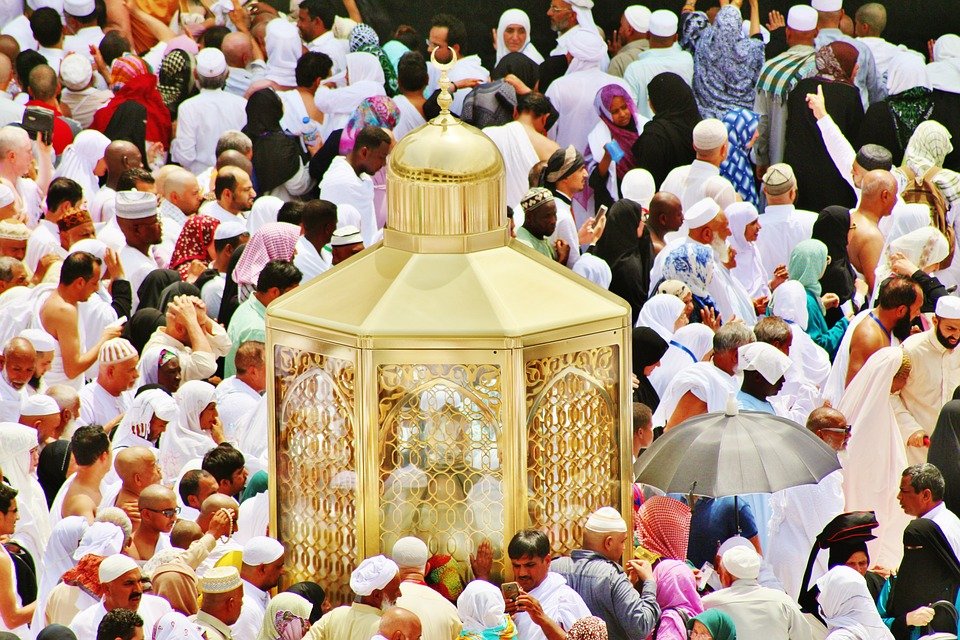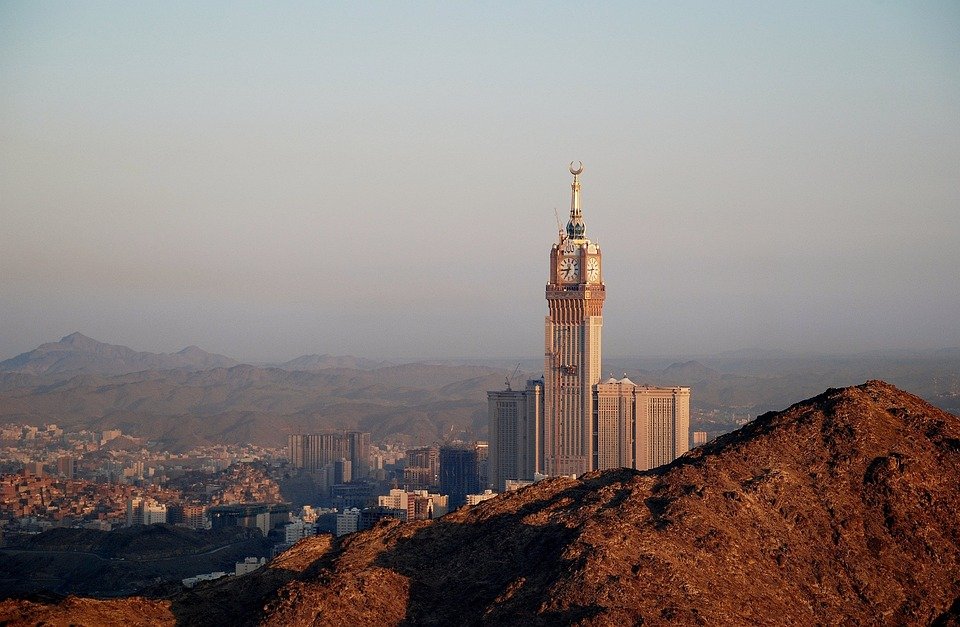You are here to read: What Do the Various Rites of Hajj Show: A Deep Insight – A Thoughtfully Written Guide Offering Spiritual Wisdom and Travel Advice for Every Pilgrim who is going on holy journey of Hajj or Umrah.
In the exploration of “What Do the Various Rites of Hajj Show,” we uncover the profound meanings and lessons behind each act performed during this sacred pilgrimage. The rites of Hajj, which include practices such as Tawaf and Sa’i, hold deep spiritual significance for Muslims worldwide. In this article, I promise to provide a clear and informative guide that reveals how these various rites reflect the core principles of faith, humility, and unity among believers. Each step in the Hajj experience offers valuable insights that reveal not only the essence of worship but also the cultural and spiritual bonds shared by the global Muslim community.
Understanding “What Do the Various Rites of Hajj Show” is vital for anyone who seeks to appreciate the significance of these rituals in Islam. These rites symbolize more than physical actions; they embody the spiritual journey of Muslims as they seek forgiveness, guidance, and closeness to Allah. With over nine years of experience in the fields of Umrah and Makkah and Madinah travel since 2016, we have the expertise to provide in-depth information on this topic. I feel that by sharing our insights, we can deepen your understanding of the essential values that the Hajj rites represent and how they foster a sense of belonging and devotion among Muslims around the globe.
What Do the Various Rites of Hajj Show: A Deep Insight
Introduction to the Rites of Hajj
Hajj is not just a pilgrimage; it’s an experience that brings people closer to their faith. Every year, millions of Muslims travel to Makkah to fulfill this sacred obligation. But what do these various rites symbolize? Each ritual carries deep meanings and teaches us valuable lessons. The rites of Hajj reflect devotion, humility, and unity among believers.
The pilgrimage lasts for several days and consists of several critical rites, each serving a distinct purpose. By participating in these rituals, pilgrims reconnect with their spiritual selves and with their community. It’s a profound journey of faith, endurance, and introspection. Let’s explore the various rites of Hajj and discover what they teach us along the way.
The Solemnity of Ihram
One of the first things pilgrims do is enter the state of Ihram. This unique garment, usually made of plain white cloth, strips away the distinctions of wealth and status. It serves as a reminder that, before God, everyone is equal, regardless of their background. Pilgrims feel the simplicity of life and the essence of humility, setting the tone for the days ahead.
Wearing Ihram also prepares the pilgrim mentally and spiritually. It symbolizes a fresh start, a leaving behind of worldly distractions. As we put on this simple attire, we shed our daily concerns and embrace the purity of intention. This rite encourages us to focus on prayer and reflection. I believe this is a crucial part of the Hajj experience, as it helps us rediscover our faith from a place of sincerity.
The Sacred Tawaf
Tawaf involves circling the Kaaba seven times. Think of it as a way of expressing love and devotion. As pilgrims walk clockwise around this spiritual center, they not only engage in a physical activity but a deeply emotional one. This act resonates in the heart, reminding us of our faith and commitment to God.
You're at the middle of this awesome post at AirlinkHajjandUmrah.com through: What Do the Various Rites of Hajj Show: A Deep Insight. Keep reading, it gets better!
Each lap around the Kaaba signifies a step deeper into our devotion. During Tawaf, pilgrims often recite prayers and supplications, connecting their hearts to the divine. The act of circling brings a sense of peace and unity, showing that we are all part of one big family of believers. In my opinion, the shared experience of Tawaf really emphasizes the interconnectedness we have with one another.
Standing at Arafat: The Pinnacle of Hajj
The Day of Arafat is perhaps the most significant moment of Hajj. Pilgrims gather at the plain of Arafat to pray and reflect. It’s a day filled with emotion, energy, and a once-in-a-lifetime opportunity to seek forgiveness. Standing there as a community, everyone feels a collective weight lifted off their shoulders. It’s a moment of surrender.
Being at Arafat emphasizes the power of prayer—both individually and collectively. We stand shoulder to shoulder, reminding us that we, too, are a global community. In that vast expanse, I feel a strong urge to reflect on my actions and seek a better path. This moment of introspection can change a person’s perspective, leading to personal growth and spiritual rejuvenation.
The Symbolism of Rami al-Jamarat
Rami al-Jamarat is a rite where pilgrims throw stones at three pillars that represent temptation and sin. This act signifies the rejection of evil and the commitment to righteousness. As stones hit the pillars, they symbolize letting go of negative influences in our lives.
The physical act of throwing stones encourages us to confront our own shortcomings. In a way, it’s empowering. It reminds us that we have the ability to overcome personal challenges. Reflecting on this rite often cultivates a sense of responsibility. I think this ritual teaches us that faith requires action and that we must actively choose the path of goodness.
The Sacrifice: Eid al-Adha
The sacrifice during Hajj, marked by Eid al-Adha, serves to commemorate the willingness of Prophet Ibrahim to sacrifice his son as a testament to his faith. This act of sacrifice isn’t just for show; it’s a way to understand the essence of giving. Sharing meat with those in need emphasizes compassion and generosity.
I feel that this rite teaches us about selflessness. Being willing to share our blessings with others strengthens community ties. In a world that sometimes feels divided, this act fosters empathy and teaches us to be more considerate. It reminds us that our faith is not just about individual piety but about uplifting those around us.
Reflecting on Hajj Lessons
As we conclude our exploration of the various rites of Hajj, it’s essential to reflect on the lessons learned. Each rite holds significance, offering insights into faith, humility, and community. These rituals are more than mere traditions; they are transformative experiences that shape our character and morals.
In my opinion, participating in Hajj and embracing its rites can lead to lasting change. The lessons learned can carry on long after the pilgrimage ends. They encourage us to strive for a more profound connection with our faith and with each other. Ultimately, what we take away from Hajj is not just the completion of a religious obligation, but a renewal of our commitment to living with intention and compassion.
That wraps up What Do the Various Rites of Hajj Show: A Deep Insight. Thanks for sticking with us till here! Share this: What Do the Various Rites of Hajj Show: A Deep Insight with your friends.
Check our homepage at Air Link Hajj & Umrah for more awesome updates.
Some interesting posts are: 1: Umrah Mubarak, 2: When is Umrah closed 2026?, 3: When does Umrah start after Hajj 2026?
Mushu, an experienced Saudi Arabia traveler and writer, shares insightful tips and spiritual reflections to enhance Hajj and Umrah journeys for fellow pilgrims. He has been to Makkah and Madina from 2016 to 2023 many times and his posts will reflect this.







